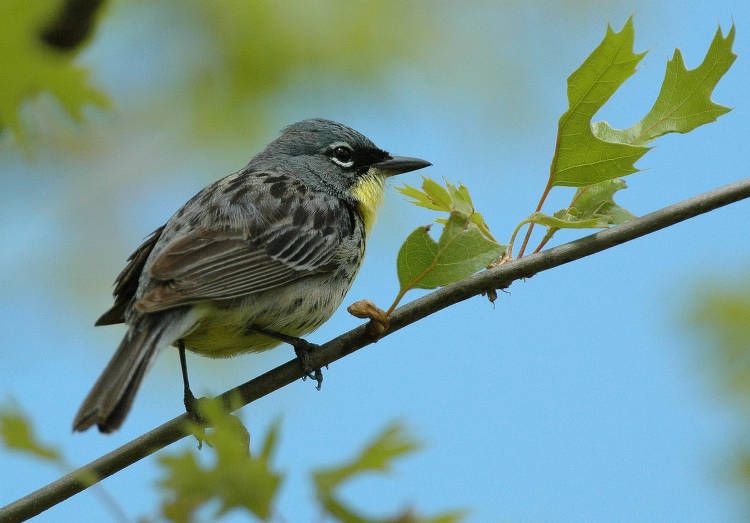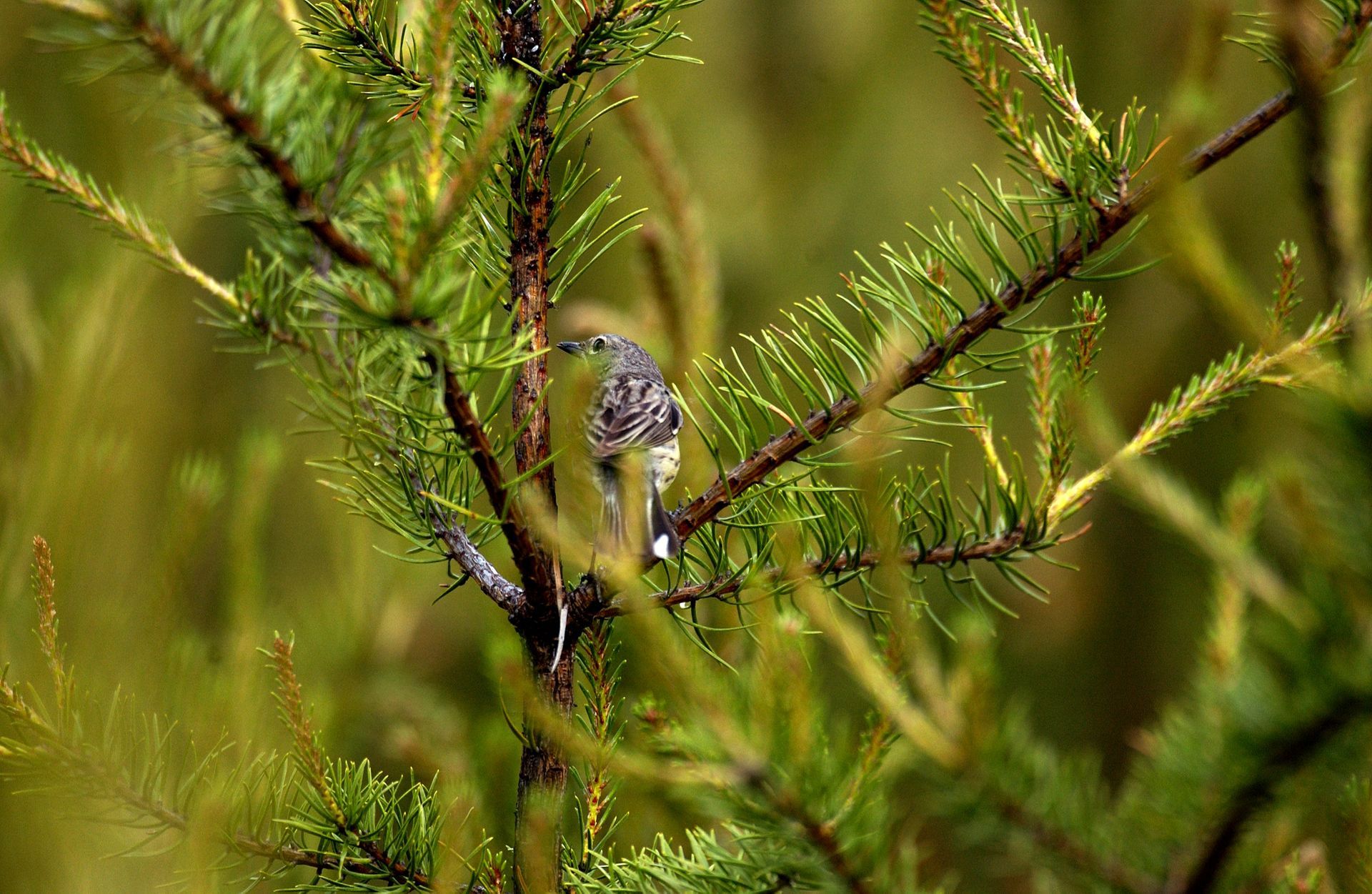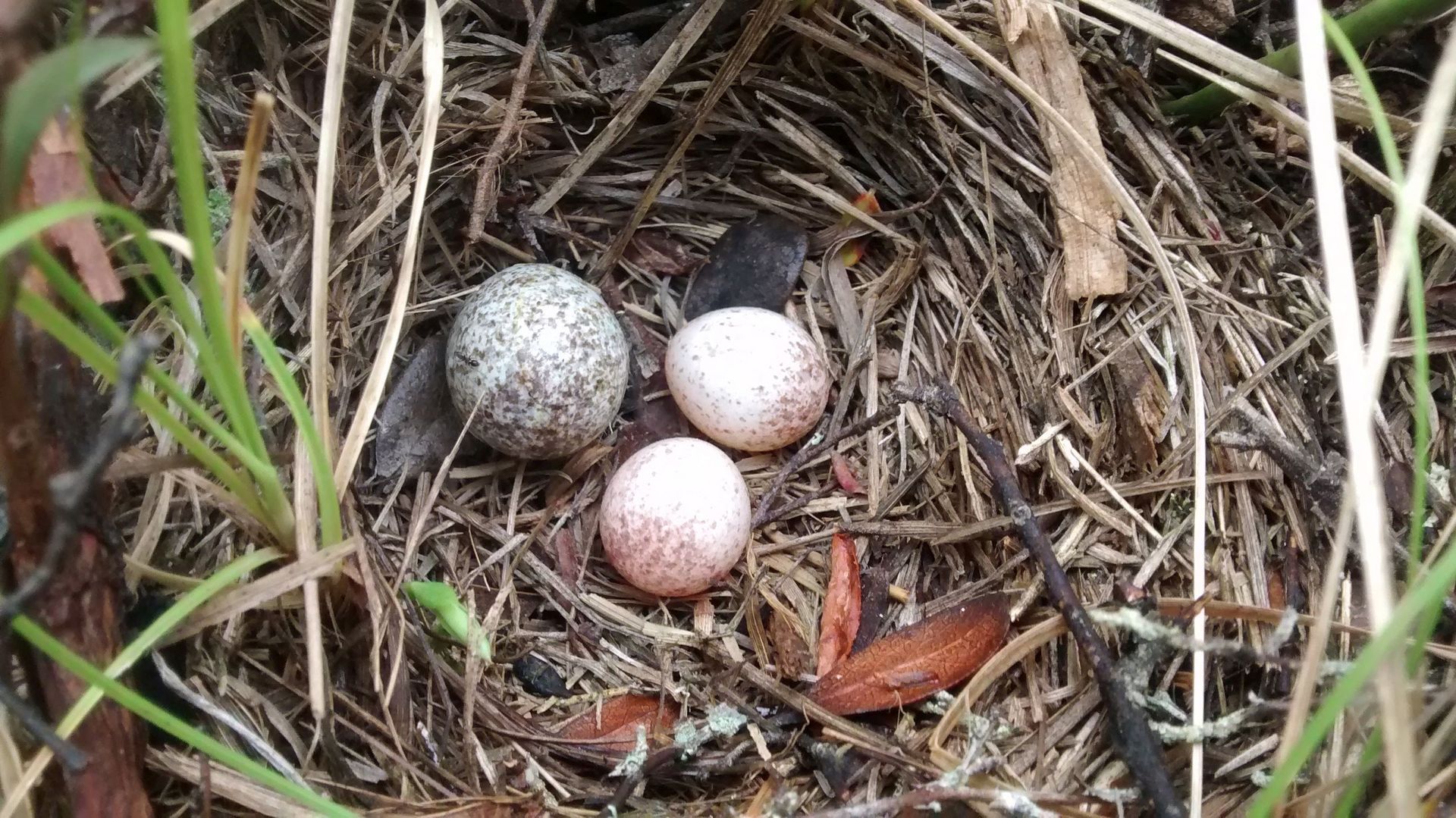Species Spotlight: The Kirtland's Warbler
As spring gets fully underway and the warmer weather hits, many birds are in the process of migrating back to Michigan. The Cornell University Lab of Ornithology reports that during peak migration periods, as many as one billion birds could be in the skies in a single night. Michigan is home to many migratory birds, from small red-wing blackbirds to larger sandhill cranes. One migratory species you might see, more so if you live in northern Michigan, is the rare Kirtland’s warbler. This bird has a long and detailed conservation story and has come back from the brink of extinction with the help of strong conservation efforts.
Identification
Kirtland’s warblers are best identified by their larger size, gray and black feathering on top, and bright yellow underside. These birds have a distinctive white eye ring that is broken in the front and back, appearing like two crescents. There are also slight differences between males and females. Breeding males are usually a brighter yellow with dark marks in front of their eyes. Females are a more brownish gray color with a paler yellow underside. Juvenile birds appear similar to females with a brownish coloring and streaks on their belly (Cornell University Lab of Ornithology, Michigan Natural Features Inventory).

Habitat
The Kirtland’s warbler exclusively occupies young jack pine forests in their northern range. They are very picky when it comes to breeding habitat and will only nest in trees that are 5-15 years old, and around 5-15 feet tall. This is due to the tree’s size. When a jack pine is around this age and height, the Kirtland’s warbler is able to build its nest on the ground at the base of the tree underneath its low branches. These branches provide important cover and shelter for their young. As jack pines grow older, their upper branches absorb all the sunlight and shade out their lower branches, causing them to die. Thus, the Kirtland’s warbler has no cover for its nest and moves on to a younger tree. (Cornell University Lab of Ornithology).
On their wintering grounds in the Bahamas, this species likes to occupy scrubby areas with low shrubs. They prefer vegetation up to around 20 feet off the ground.

Diet
The diet of a Kirtland’s warbler consists of primarily insects. Common examples include spittlebugs, ants, aphids, wasps, and beetles. These birds are also known to feed on a variety of other foods like pine needles, grasses, and even blueberries. During the winter months, they feed on insects and fruit. Kirtland’s warblers have also been known to probe flowers for nectar (Cornell University Lab of Ornithology, University of Michigan Museum of Zoology).
Behavior
Kirtland’s warblers are skillful, moving quickly and swiftly through the dense underbrush that makes up their habitat. Territories created by the males tend to be larger when vegetation is more sparse. Males arrive first in the spring and begin singing immediately, with the females soon following. Oftentimes males and females will return to the same territory each year. The males are also very aggressive when defending territories, even to the point of engaging in fierce physical interactions with one another. Kirtland’s warbler pairs are seasonally monogamous, meaning males and females form pair bonds with each other during the breeding season, but they may not be those same pair bonds year after year (USDA Forest Service, Cornell University Lab of Ornithology, University of Michigan Museum of Zoology).
Both males and females share nesting duties when caring for young. Kirtland’s warblers are also highly susceptible to parasitism from brown-headed cowbirds. These birds lay their eggs inside of a Kirtland’s warbler nest, therefore ensuring that the warbler will take care of the cowbird’s young and not its own. A brown-headed cowbird can lay as many as 3 eggs inside of a warbler nest.

Conservation
The Kirtland’s warbler has a widely known conservation story. They were one of the first species listed with the passage of the Endangered Species Act in 1973. Their declining populations were the result of habitat destruction and cowbird parasitism. Historically, the young jack pine forests that this bird occupies were created by natural wildfires. Jack pine trees are a unique species because their pinecones only open in response to fire. When fire suppression became common in the twentieth century and much of Michigan’s forests were cleared, there was little to no habitat left for the Kirtland’s warbler. Additionally, warbler nests were invaded by the brown-headed cowbird which outcompeted warbler chicks for resources, often causing them to die.
Statewide conservation efforts have mainly focused on harvesting mature jack pines and planting jack pine seedlings in logged areas. Land managers also began trapping brown-headed cowbirds in hopes of stopping them from raiding warbler nests. Following the enactment of the Endangered Species Act, the Kirtland’s Warbler Recovery Team was created, and they produced a recovery plan with the goal of 1,000 breeding pairs distributed throughout their entire range.
With key management efforts underway, the Kirtland's warbler was officially delisted in 2019. However, this bird is still listed as threatened in the state of Michigan. A recent survey by the U.S. Fish and Wildlife Service in 2021 shows global population estimates to be 2,245 pairs, more than double the 1,000-pair recovery goal (Cornell University Lab of Ornithology, Michigan Natural Features Inventory, University of Michigan Museum of Zoology, USDA Forest Service).



